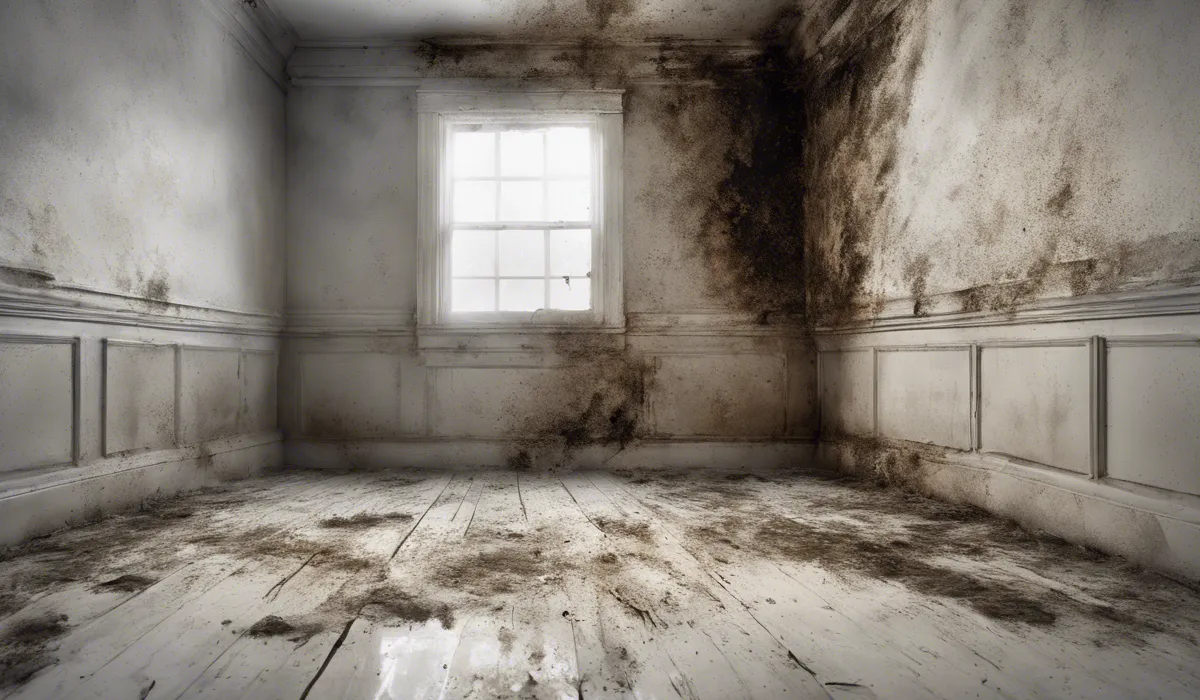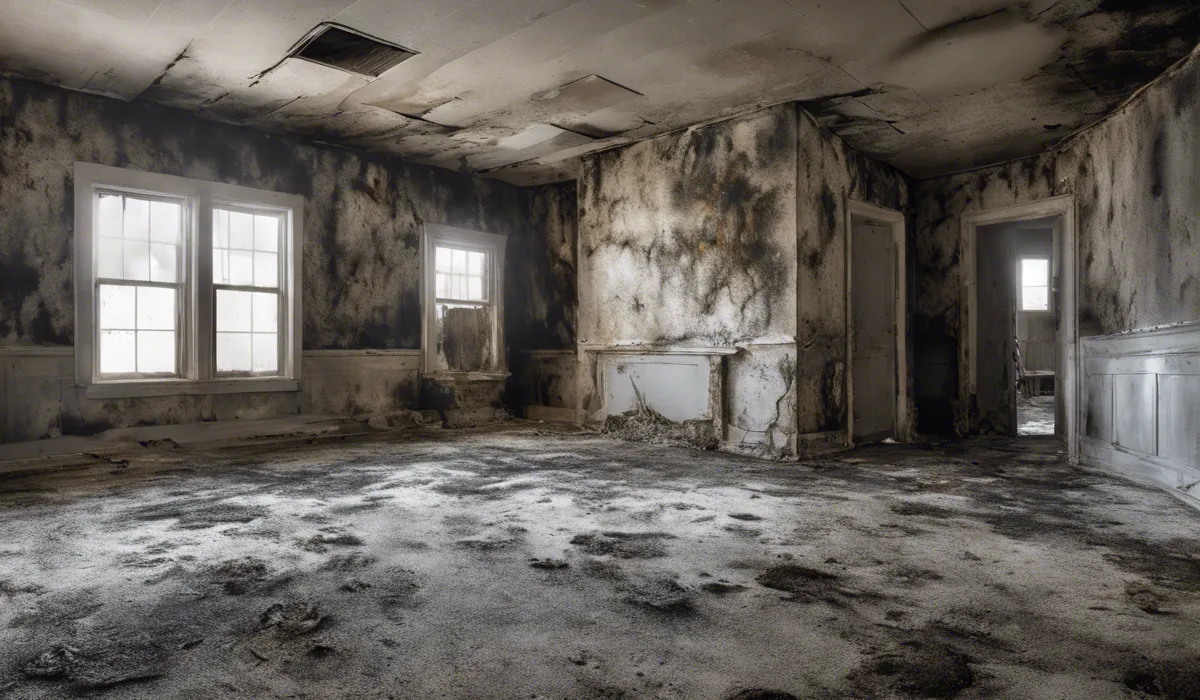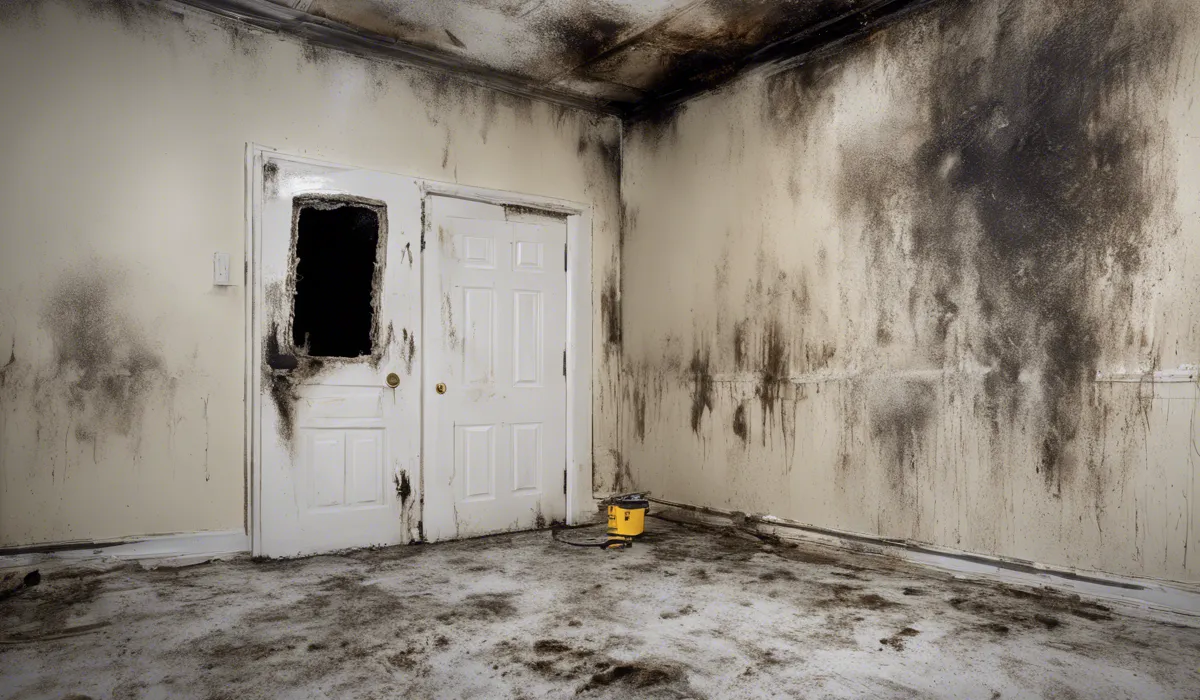Yes, fire can kill mold as high temperatures destroy mold spores. However, using fire to kill mold is unsafe and not recommended due to the risk of fire damage and toxic fumes.
Professional mold remediation is advised for effective and safe mold removal.
Understanding Mold and Its Resilience

What Is Mold?
Mold is a type of fungus that grows in multicellular structures called hyphae. These tiny organisms are found almost everywhere in nature and can be different colors.
Molds play a big role in nature by breaking down dead materials like fallen leaves and old trees. They can also appear in our homes, especially in damp areas.
Where Does Mold Thrive?
Mold loves moisture and can grow on many surfaces if the conditions are right. It needs dampness, warmth, and food, like wood or paper, to survive and grow.
Places like bathrooms, basements, and kitchens are common mold spots in homes because they tend to be moist and have materials mold can feed on.
How Resilient Is Mold?
Mold is very tough and can survive in harsh conditions. It can stay alive even when there’s not much water, and some types can handle the cold better than others.
Mold spores, the tiny seeds that mold uses to spread, are especially hardy and can wait for a long time until conditions are right to start growing.
Heat Misconceptions
Some people think that mold cannot stand heat, but this is not entirely true. While it’s correct that extreme heat can kill mold, mold can handle some warmth.
It’s only when the temperature gets really high that mold spores are destroyed. This is why you can’t just turn up the heat in your home to get rid of mold.
Effects of Fire and Heat on Mold

How Does Heat Affect Mold?
Heat affects mold by breaking down its structure and stopping its growth. When mold is exposed to very high temperatures, the proteins and other important parts inside the mold break apart.
This makes the mold stop working and eventually die.
When Does Heat Kill Mold?
Mold spores can be killed at temperatures around 140 degrees Fahrenheit (60 degrees Celsius).
However, to make sure all the mold is gone, professionals often use temperatures that are even higher. This ensures that the heat penetrates deeply and kills all the mold, including the spores that might be hidden.
Different Types of Heat Treatment
There are different ways to use heat to treat mold. Direct flame means using an actual fire, which is very dangerous and not recommended.
Heat treatment involves using special equipment to raise the temperature in a controlled way. Smoke does not kill mold; in fact, it can make things worse by adding more particles to the air that mold can use to grow.
Direct Flame vs. Heat Treatment
Using a direct flame to kill mold involves burning, which is not safe and can cause fires and damage to your home.
Heat treatment, on the other hand, is a controlled process done by professionals. They use machines to heat the air in a room to levels that are lethal to mold but safe for the house.
Practical Implications and Safety Considerations

Using Fire for Mold Remediation
While it’s true that fire can kill mold, using it to remove mold from your home is not a good idea.
Fire is unpredictable and can easily cause more damage than good. It’s also dangerous to your health because burning mold can release toxic substances into the air.
Risks of Using Fire Against Mold
Using fire to fight mold comes with big risks. You might damage your home or hurt yourself.
Also, the smoke from the fire can be harmful to breathe, especially if it contains mold particles or chemicals from burning materials in your home.
Why Professional Remediation Is Better?
Professional mold remediation is the safest and most effective way to deal with mold problems.
Experts have the right tools and knowledge to remove mold without harming your home or health. They can also make sure that the mold doesn’t come back by fixing any moisture issues.
Alternative Mold Remediation Techniques
There are safer ways to get rid of mold than using fire. These methods include cleaning with mold-killing products, using air scrubbers to clean the air, and fixing leaks or other moisture problems to prevent mold from growing back.
Best Practices for Mold Removal
To safely remove mold, it’s important to wear protective gear, use the right cleaners, and keep the area well-ventilated.
Tackling small areas of mold can often be done by homeowners, but for larger problems, it’s best to call in the professionals. They can handle the issue safely and make sure the mold is gone for good.
FAQs About Does Fire Kill Mold
Can fire effectively kill mold spores?
Yes, fire can effectively kill mold spores as high temperatures have the ability to destroy them.
Is it safe to use fire to remove mold from my home?
No, using fire to remove mold is unsafe due to the potential for fire damage and the emission of toxic fumes.
What is the risk of using fire for mold remediation?
The risk of using fire for mold remediation includes potential fire damage to property and health hazards from inhaling toxic fumes.
What should I do instead of using fire to kill mold?
Instead of using fire, you should seek professional mold remediation services for safe and effective mold removal.
Can I clean mold by burning it with a candle or lighter?
No, trying to clean mold with a candle or lighter is not recommended due to the risks of fire damage and harmful fumes.
Final Thoughts
Fire can indeed neutralize mold by destroying the spores with high temperatures. Despite this capability, resorting to fire is highly unsafe and impractical due to potential fire damage and hazardous fumes.
For mold issues, it is strongly recommended to seek professional mold remediation services to ensure safe and thorough removal.
